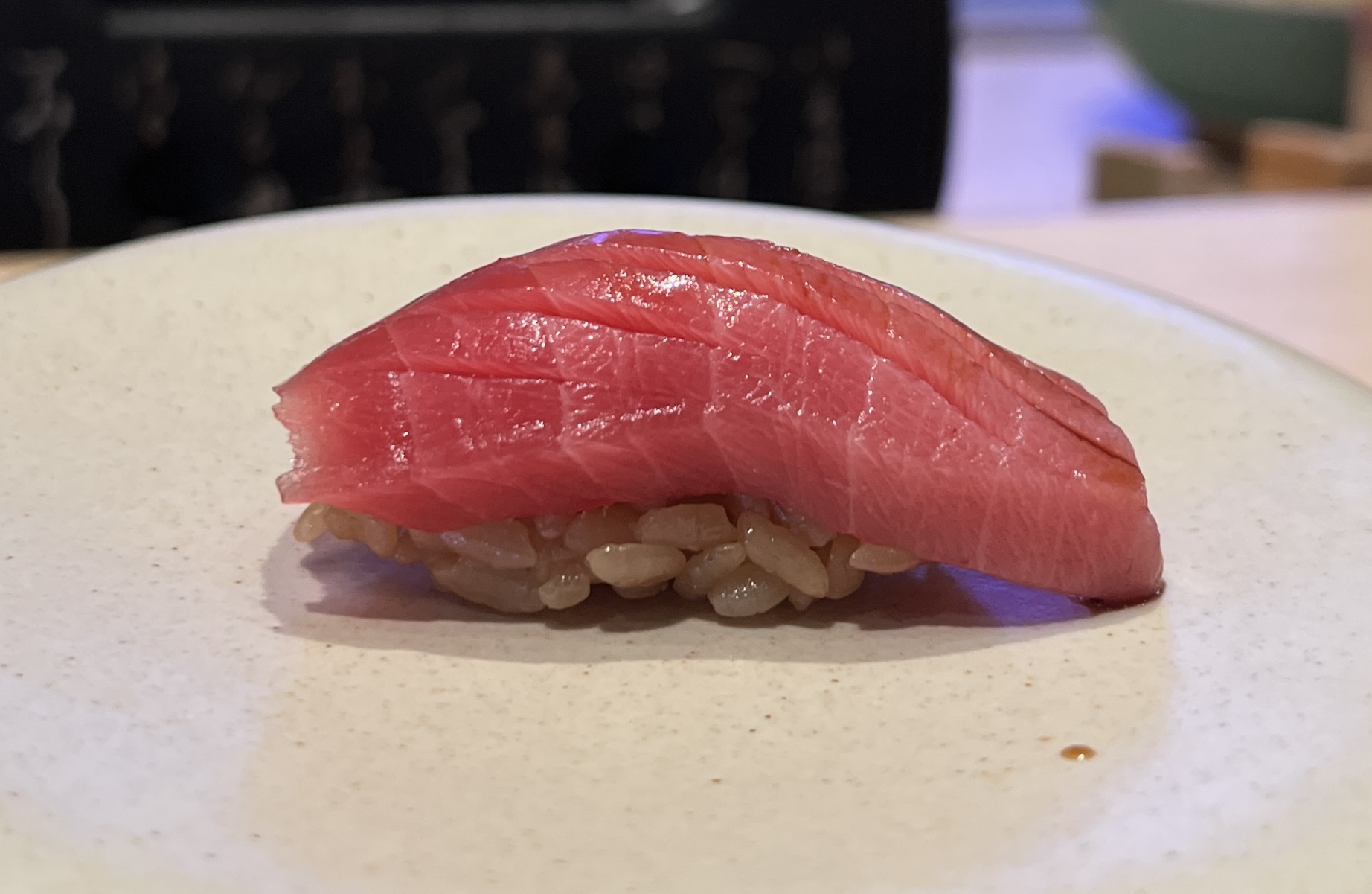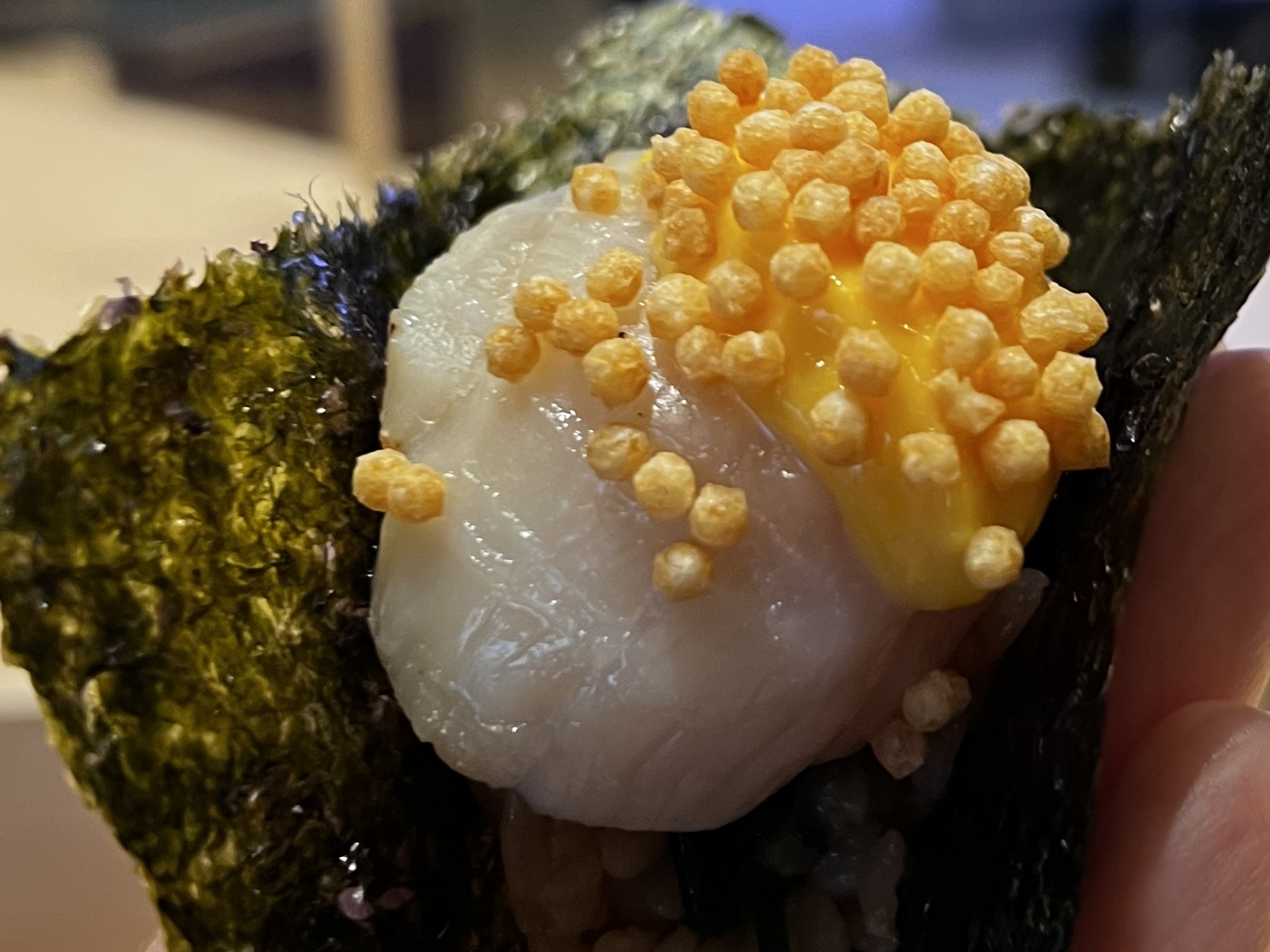The interior is not bad, but with so many counter seats, the place tends to get a bit noisy. It feels more like a lively sushi spot where families can gather and have fun rather than a quiet, refined sushi restaurant.
Only one floor staff member speaks English, while the others seem to have no English ability at all. In Bangkok, even street vendors can usually manage some English, so it made me wonder — is it that they simply can’t attract good staff here, or is the restaurant intentionally targeting middle-class Thai customers?
The food overall wasn’t bad, but the final dish, the tamago (egg), was disappointing. It was dry and flavorless, almost like a bland sponge cake. It made me think the chef may never have actually experienced true, authentic sushi.
It became clear that this isn’t the kind of place where people who know real sushi — like those who dine in Ginza. In the end, considering the low prices, maybe it’s understandable. In fact, for what you pay, it’s probably better than expected.




















